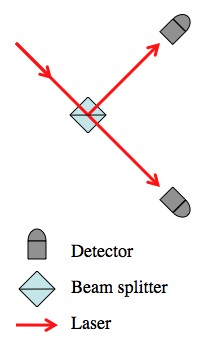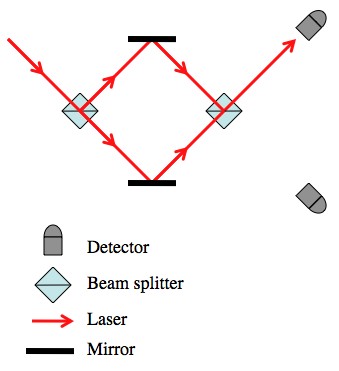The original questions were:
How can quantum computers actually be more useful if we cannot observe superposition, since trying to harness two states at once would just produce one state?
Quantum Physics … is so full of uncertainty and Einstein didn’t like “God playing dice with the world.” How would you explain that quantum physics has today led to the development of the most accurate theories we have till date?
Physicist: Whether a quantum system is random or not kinda depends on what you’re taking about. For example, the electrons in an atom show up in “orbitals” that have extremely predictable shapes and energy levels, and yet if you were to measure the location of an electron within that orbital, you’d find that the result is pretty random.
One of the great victories of quantum mechanics was to prove, despite Einstein’s scoff to the contrary, that God does play dice with the world. Everything in the universe is in multiple states, but when a thing is measured it’s suddenly found to be in only one state (technically; a smaller set of states). Setting aside what a measurement is and what measurements do, the result of a measurement (the state that a thing will be found in) is often, but not always, fundamentally random and unpredictable.
For example, when a beam of light passes through a beam splitter the beam splits (hence the name) into two beams of half the intensity. In terms of waves this is pretty easy to explain; some of the wave’s energy goes through, and some reflects off of the splitter. In quantum theory you continue to describe light (and everything else) as a wave, even when you turn down the light source so low that there’s only one photon passing by at a time.

According to quantum theory (and verified by experiment) there is no way to predict which direction a photon will take through a beam splitter. This situation is "irreducibly random".
So, in exactly the same way that you’d mathematically describe a wave as going through and being reflected, you also describe the photon as both going through and being reflected. Place a pair of detectors in the two possible paths and you’re making a measurement. Suddenly, instead of taking both paths at the same time, the photon is found on only one (indicated by which detector detects), and there is absolutely no way to predict which path that will be.
So on the face of it, that seems like it should be the end of the road. There’s an irreconcilable randomness to the measurements of quantum mechanical systems. In the example above (and millions of others like it) it is impossible to make an accurate prediction. But keep in mind; it is possible to be clever.
The quantumy description of each photon going through the beam splitter isn’t a simple as “it’s totally random which path it takes”. Each photon is described, very specifically and non-randomy, as taking both paths.

By properly adjusting the path lengths you can make it so that all of the photons go to a single detector. You can't predict which path the photon takes, but you can perfectly predict the end result.
Take the same situation, a laser going through a beam splitter, and add a little more to the apparatus. With a couple mirrors you can bring the two paths back together at another beam splitter. The light waves from both paths split again at the second beam splitter, but when you’re looking at the intensity of what comes out you have to take into account how the light waves from the two paths interfere.

When waves are combined they don't simply add, they interfere. The sum of two waves can be larger (constructive interference) or smaller (destructive interference) depending on how they line up.
By carefully adjusting the distances you can cause one path to experience complete destructive interference, and the other to experience complete constructive interference. This is all fine and good for a laser beam, but when you turn down the intensity until there’s only one photon passing through at a time, you still find that (in the example pictured) only the top detector will ever be triggered. This isn’t “theory” by the way, it’s pretty easy to set this up in a lab.
This is a little spooky, so take a moment. The quantum theory description is that a single photon will take both paths. If detectors are placed in the two paths it is impossible to predict which will fire. But if the paths are recombined, we can see that the photon took both paths, because it interferes with itself in a very predictable way, and produces very predictable results. If, instead, we took the “quantum mechanics says things are random” tack we’d expect that at each beam splitter the photons made a random choice, and the detectors in the second example would each fire half the time.
So quantum theory can predict that an event will be random, or in other situations it can accurately predict the outcome (even though that prediction sometimes seems impossible). It all comes down to a judicious application of measurements and how you allow the quantum system to interact with itself.
This particular example can be extended to allow for “interaction free measurements“, which seem impossible, but are in fact just another (accurate) prediction of quantum mechanics. The non-randomness of quantum mechanics is the basis of quantum algorithms, and (in a less direct way) is why chemistry “works”.







Pingback: A finely tuned universe that points to a God. - Page 26 - Christian Forums